Visiting the house of Mr. Mai Van Quyt (78 years old, in Thong Nhat village, Tinh An Tay commune, Quang Ngai city), the person who preserves the method of making water wheels, by the Tra river, we found him diligently whittling bamboo to restore this model.
Sitting and chatting with us, Mr. Quyt said that he is the third generation to continue the profession of making water wheels. Since the age of 18, he followed his father to shave bamboo, split bamboo strips and learn how to make water wheels. Until now, he still remembers clearly the days when he and his father brought water from the Tra River to the fields to serve the irrigation needs of the people. At that time, his father was a famous "boss" of water wheel operators in the locality.
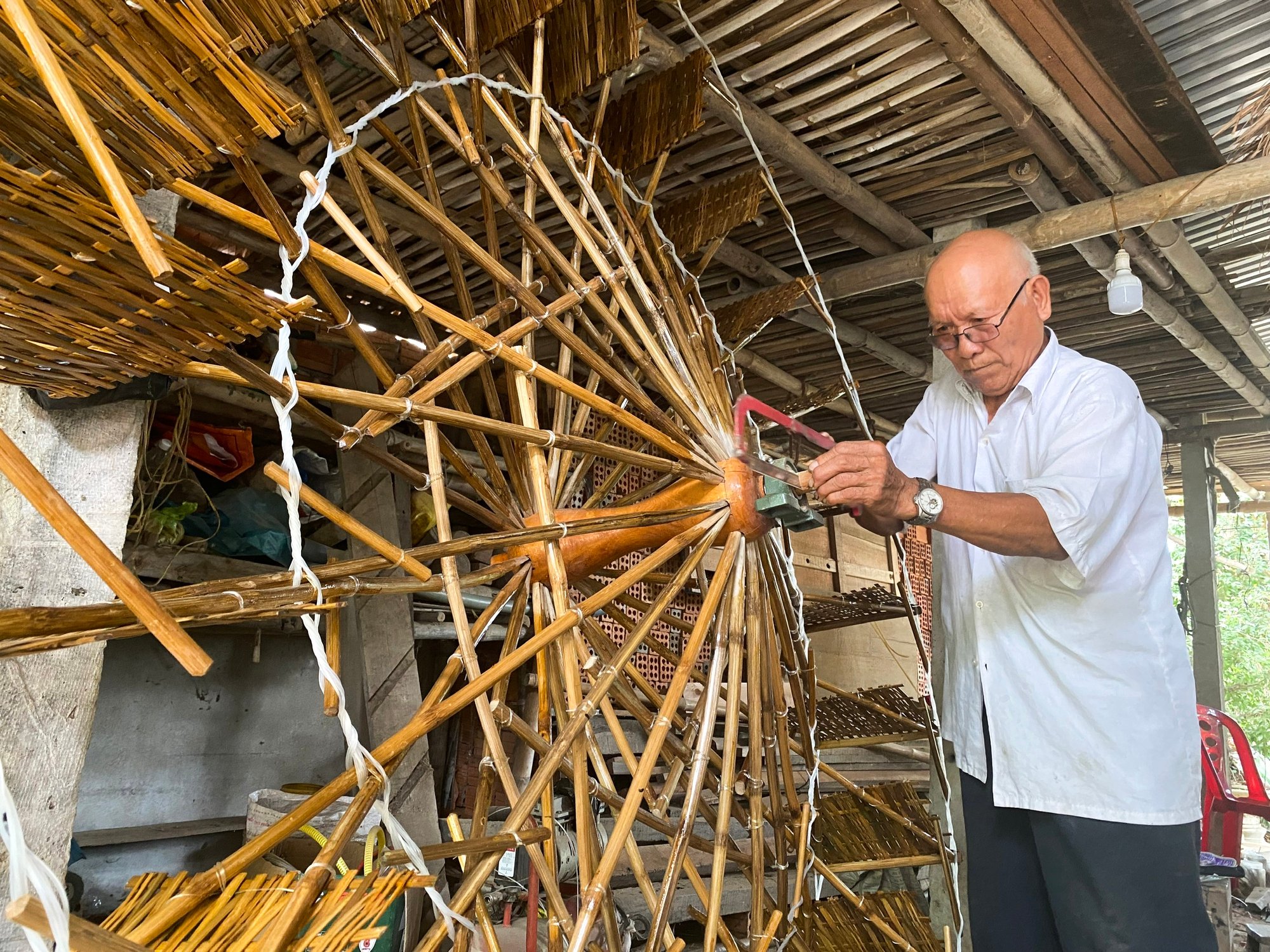
Mr. Mai Van Quyt is repairing the rotating shaft of the water wheel bank.
Associated with childhood
Mr. Quyt said: In the past, his grandfather was also a "boss" specializing in controlling and operating water trucks, and his father followed in his grandfather's footsteps. When it was his generation, after only a few years of working, the State invested in the Thach Nham irrigation project to bring water to irrigate the fields along the Tra River, so he retired.
His childhood was closely associated with the water wheel banks, it was deeply ingrained in his blood. So even though the water wheel banks are no longer used to transport water to the fields, he still diligently makes small models to display or resell to cafes, restaurants, tourist areas... Currently, many restaurants and cafes in Quang Ngai, Quang Nam, Da Nang, Binh Dinh, Phu Yen have ordered and bought the water wheel banks he made to display.
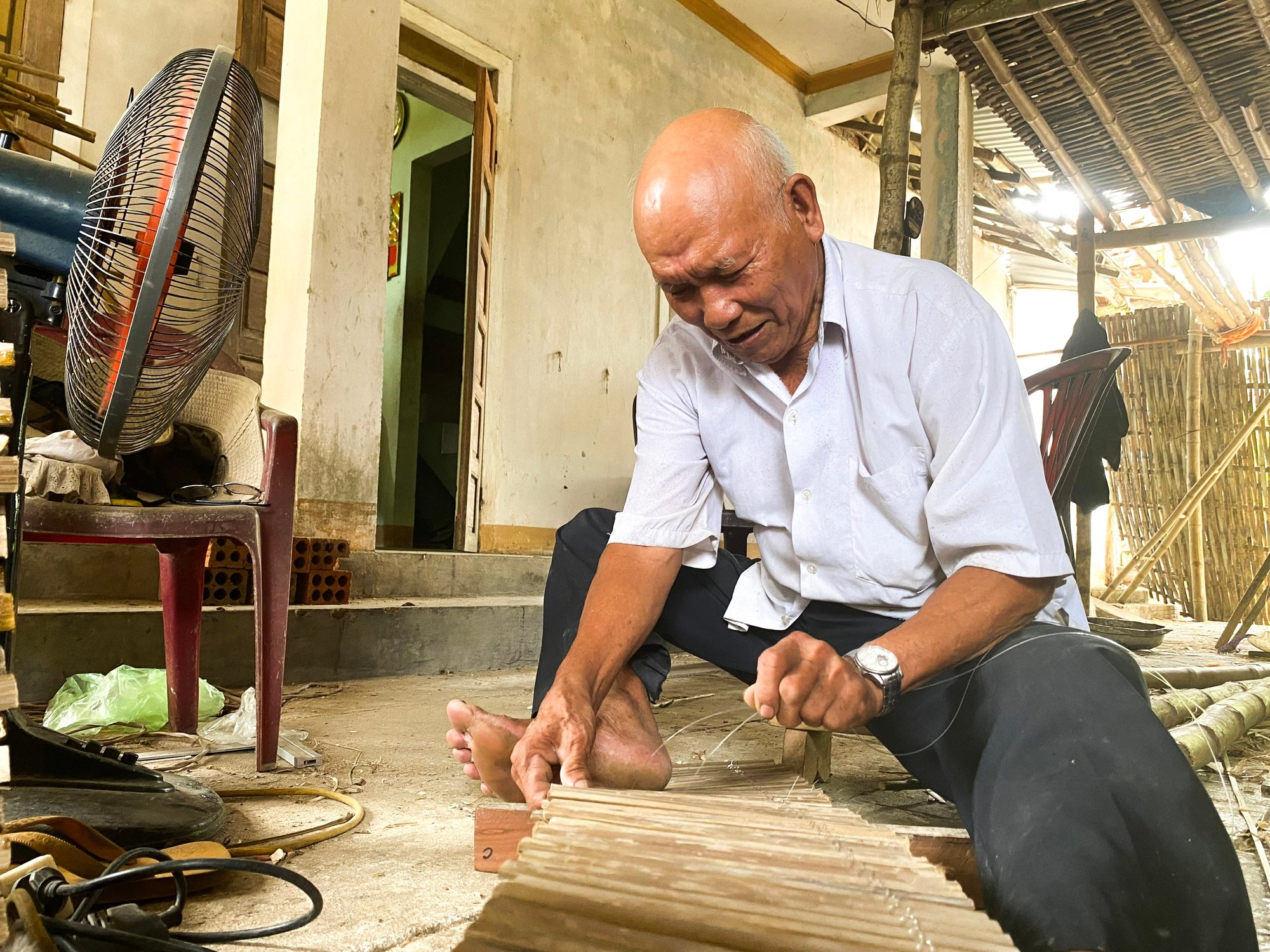
Use fishing line to tie the bamboo sticks together.
According to Mr. Quyt, in order to not fade the image and memory of a water wheel as a symbol of Quang Ngai people, he has recreated miniature models of the wheel, with a diameter of 2 to 4 m. Each model wheel has from 2 to 4 wheels, depending on the needs of the user. In principle, the way to make a model wheel is still exactly the same as the real wheel, so the person making the water wheel must make it so that the wheel is balanced, does not have errors when operating, can still take water and rotate evenly.
Cultural researcher Le Hong Khanh
Mr. Quyt is currently making a model of a water wheel bank with 9 wheels, with a diameter of 2 m and so far he has completed 3 wheels. After completion, if anyone wants to own the model above, he will sell it for about 90 million VND, otherwise he will keep it as a souvenir for the future.
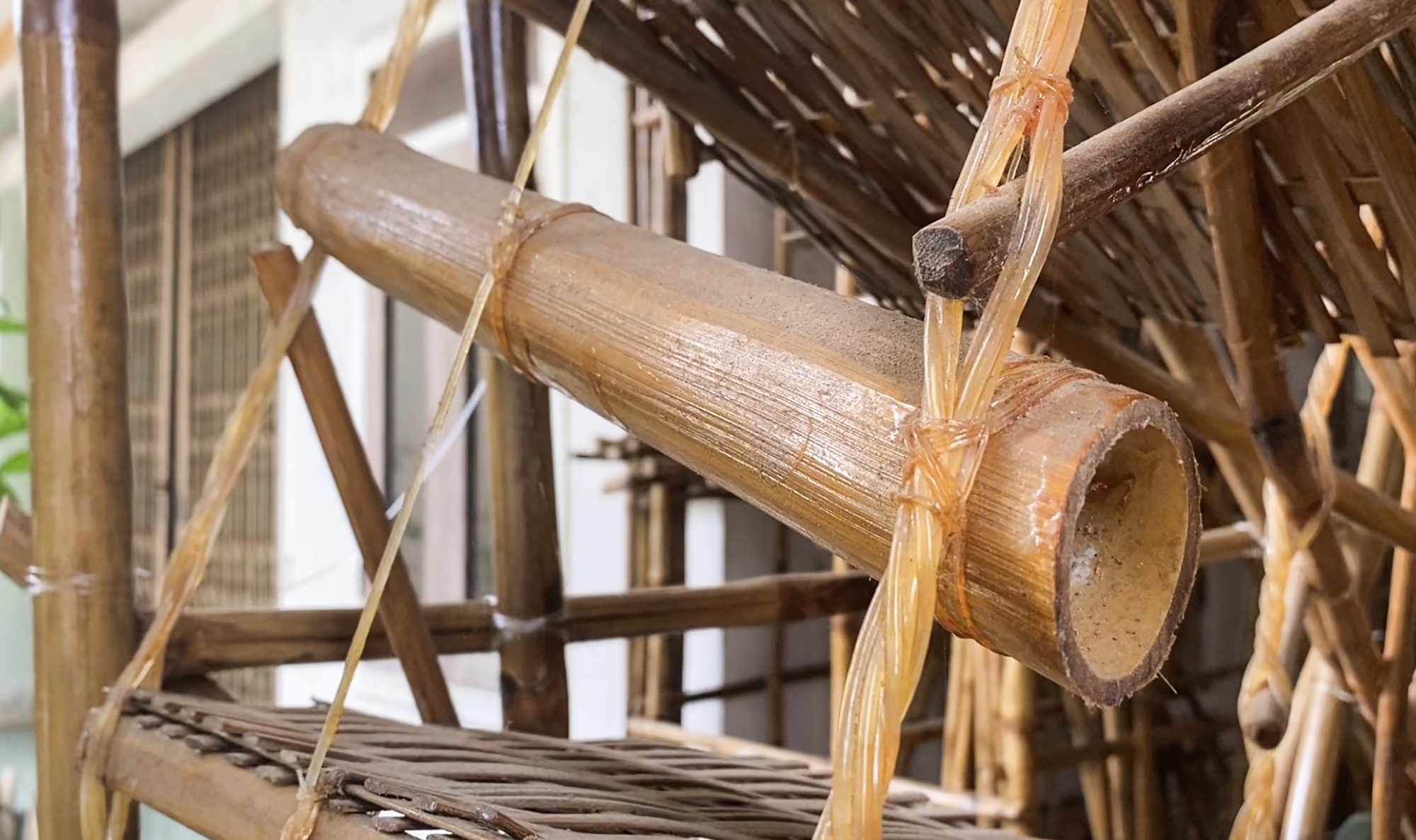
Bamboo tube to get water when the wheel rotates
Symbol of Quang Ngai people
"The main material for building a water wheel bank is bamboo. In the past, most of the banks were tied with rattan, but now, when making models, they are made with fishing line to tie the wheel parts together to increase the product's lifespan. The most difficult thing in making a water wheel bank is choosing the location and building the bank. The bank must be built in a V shape, so that the water is directed to a narrow place to create a strong flow. The bank will be placed right at the point where the water flows strongly. Each bank like that has about 10 - 12 wheels, each wheel has a diameter of about 10 m. Around each wheel are tied hundreds of bamboo tubes, placed at an angle, so that when the wheel turns into the water, these bamboo tubes are full of water. The force of the water flow due to the construction of the bank will push the wheel to continue rotating, lifting the water pipe up and pouring it into the trough, bringing water to the fields," Mr. Quyt shared.
The Tra River water wheel bank was once considered a symbol of Quang Ngai in the mid-18th century. The project not only provided irrigation water for agricultural production but also entered poetry, music and painting because of its aesthetic value, containing a philosophy of following the laws of nature... Over time, the water wheel bank has gradually been erased and is falling into oblivion.
"The most unique thing about the wheel bank is that the worker has to place the bamboo tubes so that when the wheel comes into contact with water, the bamboo tubes can pick up the water. Just like that, the force of the flowing water will push the wheel to rotate evenly over the years, without having to spend any effort to operate it. Although it does not require labor to operate, building the wheel bank requires a lot of effort. Each wheel bank like that requires thousands of bamboo trees and takes at least 1 month to build," he added.
According to Mr. Le Hong Khanh, a cultural researcher in Quang Ngai, Mr. Mai Van Quyt is one of the last people in this province who still preserves the traditional techniques and methods of making water wheels.
"The Tra River bank is a symbol of the image of the hard-working, creative people of Quang Ngai, enduring the rain and sun to bring benefits to life," said Mr. Khanh.
Source link








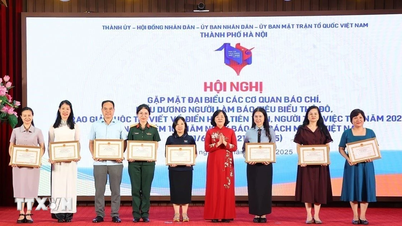

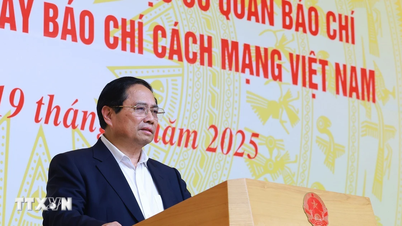
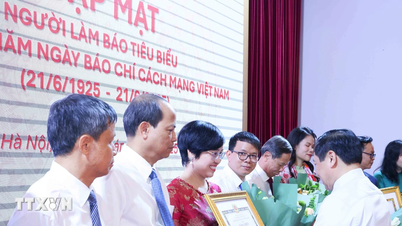
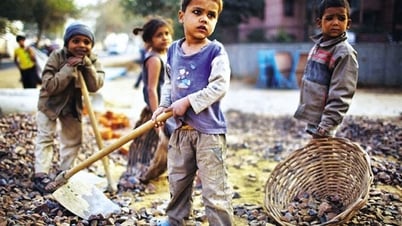


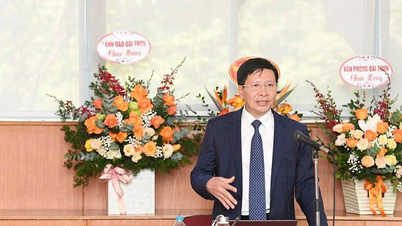




























































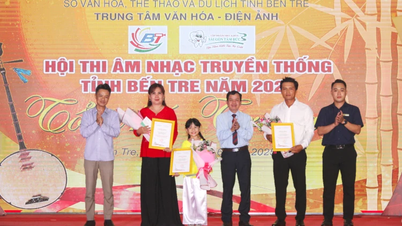

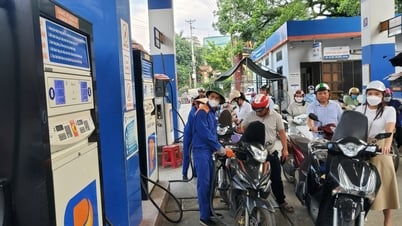


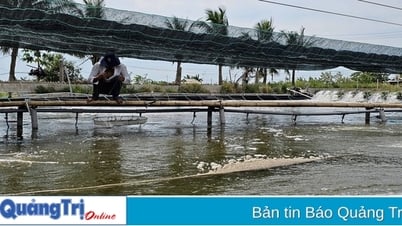














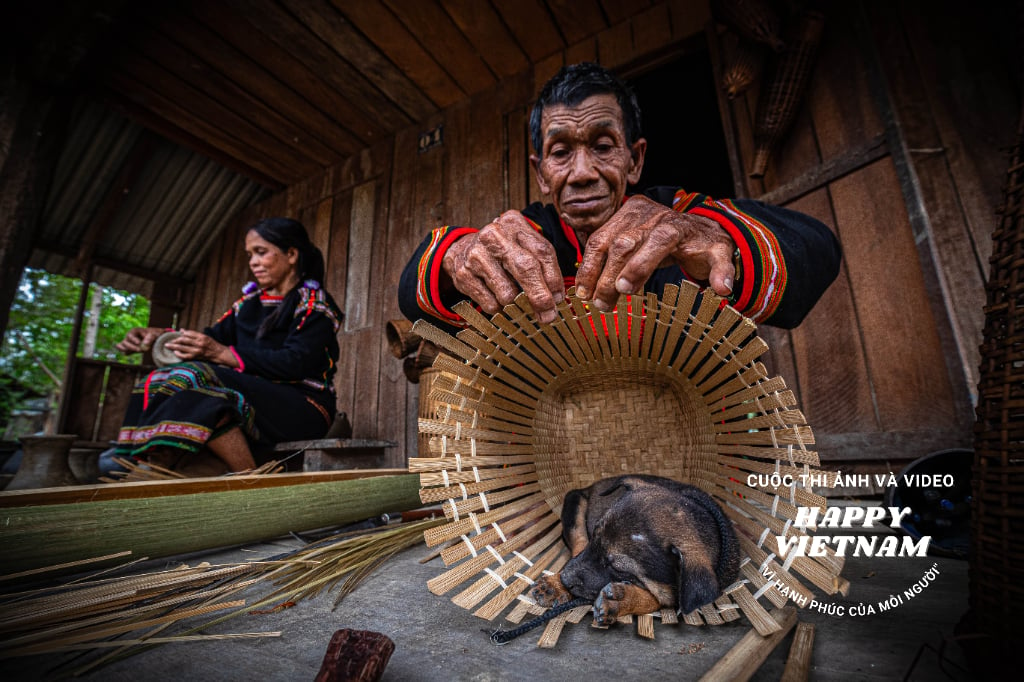
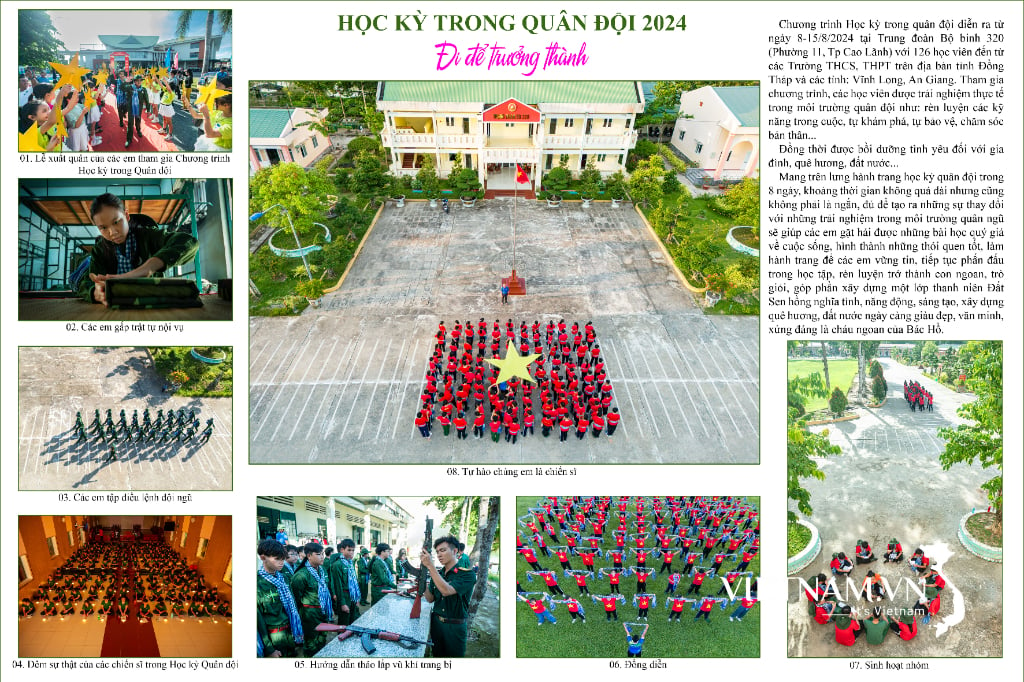
Comment (0)